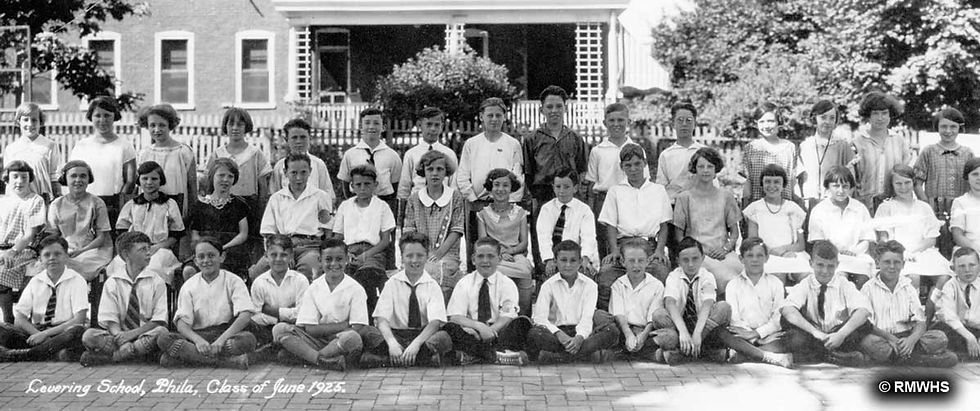Preserving & Promoting
Local History, Art, & Culture




Ridge Ave Roxborough Historic District
Gothic Revival Architecture
The picturesque Gothic Revival style was popularized by landscape architect Andrew Jackson Downing’s Cottage Residences, first published in 1842 and reprinted in many editions in the mid and late nineteenth century. In the eighteenth and early nineteenth centuries, American architecture styles, including Georgian, Adam, Federal, and Greek Revival, were predicated on Classical forms and vocabulary. In the early nineteenth century, as industry grew, rural areas transitioned into suburbs, a middle class emerged, and the field of architecture was professionalized in the United States. Those architects proposed a new architectural vocabulary appropriate for housing in suburban environments. In 1837, architect Andrew Jackson Davis (1803-92) published Rural Residences, in which he drew from British sources to champion the Gothic Revival style for domestic architecture for the first time in America. Rural Residences was influential, but the Gothic Revival style for American domestic architecture was catapulted into collective national consciousness by landscape architect Andrew Jackson Downing (1815-52), a friend and collaborator with Davis, who published A Treatise of the Theory and Practice of Landscape Gardening (1841), followed by Cottage Residences (1842), and The Architecture of Country Houses (1850). In his books, Downing popularized the modest-sized, inexpensive detached cottage in a suburban or rural setting. Downing’s pattern books provided multiple design suggestions for this type of dwelling, ranging from a small suburban cottage to a villa in the Italian style. By the mid-1840s, the picturesque Gothic or Gothic Revival style of architecture began to increase in popularity for residences, largely due to Downing’s pattern books. Downing’s Cottage Residences is considered “one of the most widely used books in American architectural literature.”80 Downing’s The Architecture of Country Houses, a companion to Cottage Residences, has been called a “seminal” book in American architecture. According to the National Historic Landmark nomination for the Rotch House, a Gothic Revival house in New Bedford, Massachusetts designed by Davis in 1845, “the publication and eventual dissemination and popularity of Downing’s Country Houses became a watershed event in the evolution of American domestic architecture, and today cultural historians recognize the book’s significant consequences for the shaping of popular taste in the pre-Civil War period.”81 While his books included many details of house and landscape designs, Downing provided the designs as suggestions, which a builder could adapt to the site and the needs of the homeowner. Downing’s books, in collaboration with Davis, who provided many of the architectural designs and illustrations, inspired the design of numerous cottage residences in rural and suburban settings, leading to an era characterized by these types of Victorian cottage residences. A rural, rather than urban, setting was considered important to the Gothic Revival style, as the building was intended to be compatible with the natural landscape, not situated on a narrow urban lot.82
The primary distinguishing characteristic of the Gothic Revival style is the centered cross gable roof with decorated barge boards. Other characteristics include finials, steeply pitched roofs, pointed arch lancet windows extending into the gables, and open entry and full-width porches with flattened, pointed Gothic arches.
One of the best examples of the Gothic Revival style in Roxborough is the Amos Barnes House at 559 Righter Street, at the intersection of Ridge, Righter, and Hermit. Constructed of Wissahickon schist about 1856, the Barnes House effectively represents the Gothic Revival style with Victorian Cottage elements, as reflected in the center cross gable decorative barge board at the roofline. Originally, the building had a full-width front porch and lancet window at the gable (Figure 29). Other excellent examples of the Gothic Revival style on Ridge Avenue include the houses at 5508 Ridge Avenue, which includes the centered cross gable, arched gable windows, and full-width front porch; and 8029 Ridge Avenue, which includes the centered cross gable, lancet windows, and a highly ornamented, full-width, front porch. The building at 8029 Ridge Avenue is unique in that it is clad in wood shiplap siding rather than masonry. Also, rather than decorative bargeboards, it has bracketed cornices, linking it to the Italianate style as well.
 Describe your image |
|---|
This information has been posted by RMWHS with the permission of the Philadelphia Historical Commission.
Sections:
80 Adolf K.Placzek, “Preface to the Dover Edition,” in Andrew Jackson Downing, Victorian Cottage Residences (New York: Dover Publications, Inc. 1981), p. iii.
81 Peggi Medeiros and William E. Krattinger, National Historic Landmark Nomination for William J. Rotch Gothic Cottage, designated February 17, 2006, p. 9.
82 Leland M. Roth, A Concise History of American Architecture (New York: Harper & Row, Publishers, 1979), p. 100-103; Virginia & Lee. McAlester, A Field Guide to American Houses (New York: Alfred A. Knopf, 1993), p. 200.